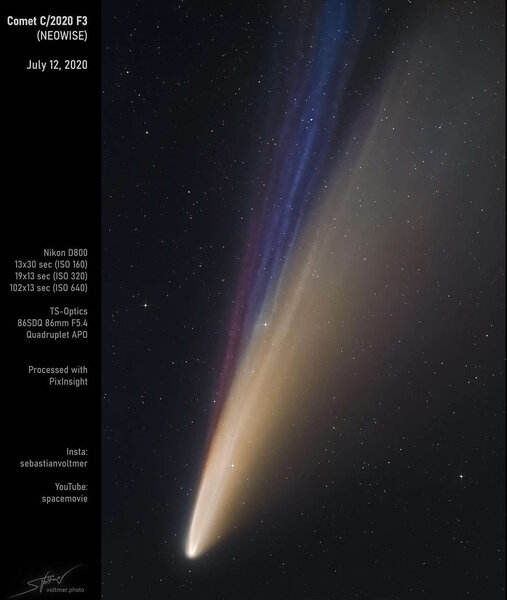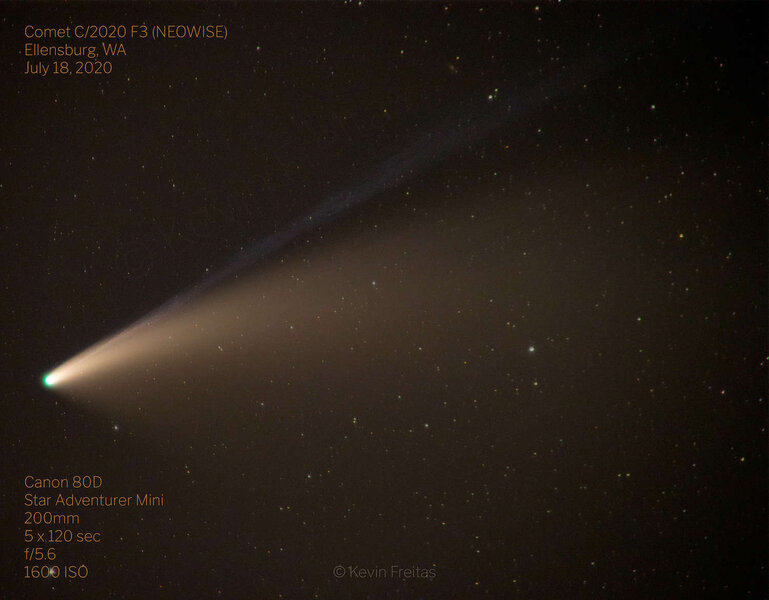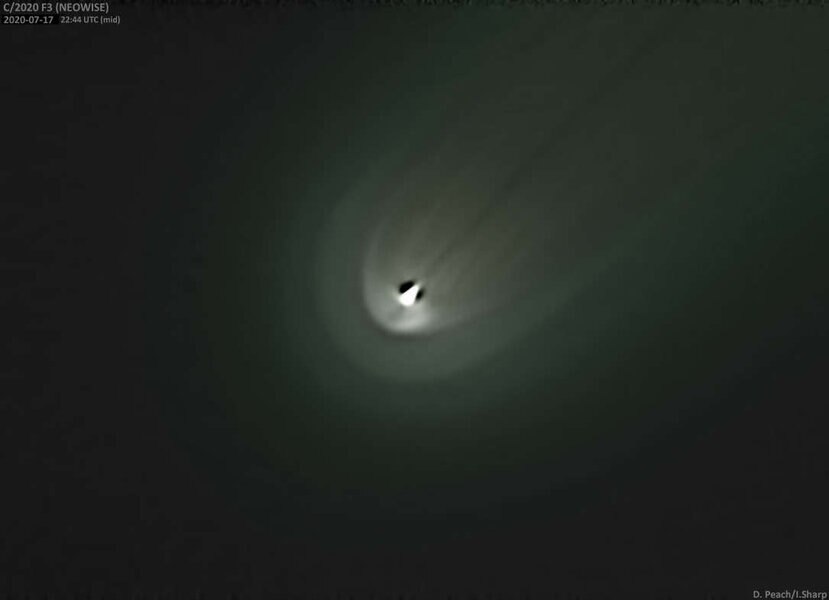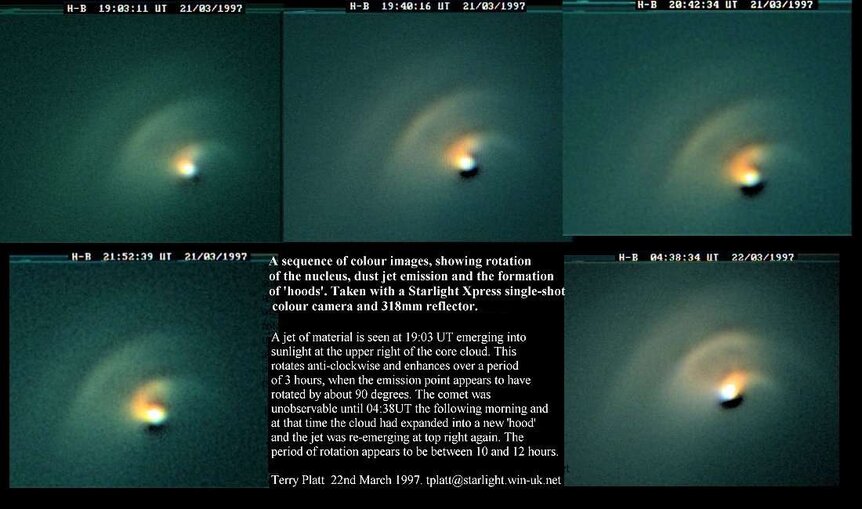Create a free profile to get unlimited access to exclusive videos, sweepstakes, and more!
Comet NEOWISE goes from red to green and has spiral arms
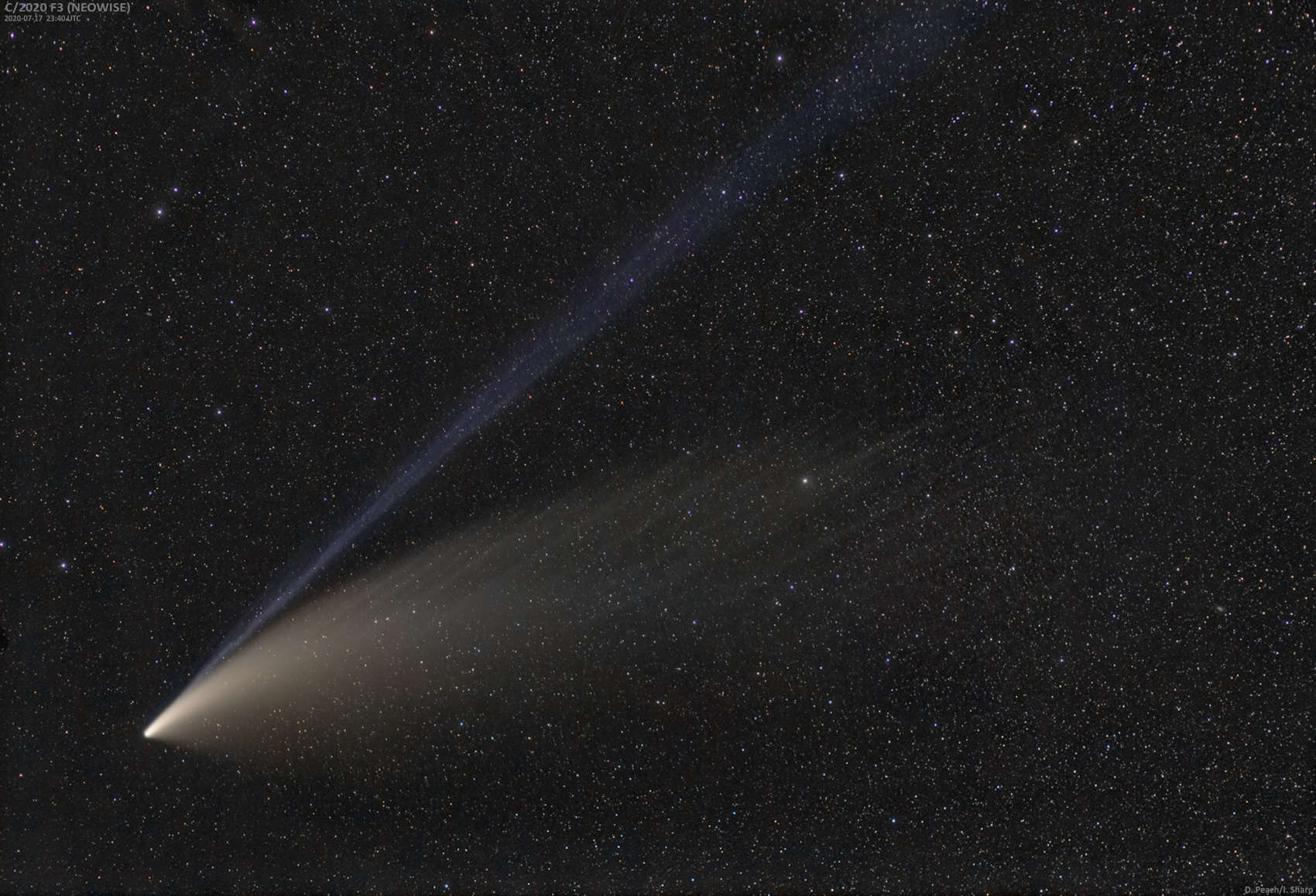
The comet C/2020 F3 (NEOWISE) is brightening up the northern sky right now, a once-in-a-decade (or longer) sight. I've been out after sunset to see it and found it easily without any optical aid, and in fact the tail is visible to the naked eye as well. It helps to have a dark site with no lights around, but even if you're in a place where light pollution isn't great it's still worth grabbing a pair of binoculars and taking a look.
My article from last week gives advice on how to see it. If you can, go look! It's getting closer to Earth and reaches perigee (closest approach) on 23 July. It's best to see it that night, but any day this week is fine viewing.
The photos of the comet coming in are nothing short of jaw-dropping. And, to my rational delight, there's lots of science in them, too.
For example, check this out:
That photo was taken by Dr. Sebastian Voltmer on 12 July 2020 from Spicheren, France. It's actually 134 images added together to reduce noise and bring out faint features. The tip of the comet is called the head, and inside it is the tiny nucleus of the comet, the solid chunk of rock and ice that's about 5 kilometers across. The head is fuzzy because sunlight warms the ice and turns it into a gas (this is called sublimation), which then expands around the nucleus. That part is called the coma (Latin for “hair”) and can be many tens of thousands of kilometers across.
But that tail! Or I should say, those tails. The yellowish one is comprised of dust, small grains of rocky silicates and such that were embedded in the ice and released when the ice sublimated. Pressure from sunlight pushes on the grains, which then slowly move away from the head, lagging behind in the orbit. That's why the dust tail curves. The streamers in it may be due to vents on the comet (pits on the surface with ice in them) releasing gas, which can form long thin features like that as the nucleus rotates.
The straight tails are the ion tails. These are from ices that turned to gas from sunlight, then are ionized (have one or more electrons stripped from them) by ultraviolet light from the Sun. These gases glow at characteristic colors. Blue is generally from carbon monoxide (CO+), and green from diatomic carbon, two carbon atoms attached together (C2+).
But in Voltmer's photo there's also a red ion tail, and that's been the subject of much discussion online. I wasn't sure what it might be at first; sodium was my first guess but that glows yellow. Ionized water (H2O+) glows red, but the only way to know would be to look at spectra, where the light form the comet is dissected by color.
Happily my colleague Karl Battams pointed me toward a message board that had spectra! Weirdly, there's very little going on in the red part of the spectrum. There is some glow from water, but not much. However, for several days there was a strong glow from sodium (this emits at two colors very close together at 589.0 and 589.6 nanometers if you're curious). It was strong in early July, but faded considerably over the course of about a week.
Hmmmm, the red ion tail was strong early on, but faded, and is now not seen. That fits with sodium, but why does yellow sodium look red in photos?
Voltmer proposes an idea in his post with his photo: In color digital cameras, yellow and blue add together to form a gray color, and the water emission pushes this slightly red. So the bright sodium and carbon monoxide colors amplified the glow from water, but when the sodium faded the feeble light from water got drowned out, leaving just the blue. That idea makes sense to me, and does explain what we see.
And here's another cool thing: It may have stopped making a red tail, but the coma is turning green:
Looking at pictures from just a few days ago no green was visible, but then over the weekend (around 18 July) the front edge of the coma starting showing green in all the photos online. So I'm thinking this is real, and most likely due to C2+ starting to get in on the action, possibly due to a new vent opening on the surface. C2+ is not hugely abundant in comets, but when hit by sunlight it glows very vigorously, outshining more abundant elements and molecules.
But wait! There's yet even more cool stuff!
The incredible astrophotographer Damian Peach posted a wonderful close-up of the head of NEOWISE from 17 July, showing off shells of gas around it:
In my article last week I posted a similar photo from Debra Ceravolo. I've seen something similar before, back when the glorious comet Hale-Bopp graced our skies in 1997. I wrote about it at the time; these shells or hoods are from vents on the comet spewing out gas in more or less a straight line, directly away from the nucleus. But as the nucleus rotates that stream of gas looks like an expanding spiral to us. It's an illusion, and is the same thing that makes a spinning garden sprinkler look like it's sending out water in a spiral around it. Each droplet is shot straight out, but moves outward a little bit before the next droplet is sent out in a slightly different direction… and so on, creating a spiral wave that isn't actually real. It's just the way our eyes connect the dots.
Peach also posted an amazing video of the comet he took that he kindly allowed me to convert it to a YouTube video so I could embed it here (it repeats three times):
The video is only a few seconds long, though it represents 80 minutes of observations. You can see the shells forming! The comet is sending out a stream to the lower right, where it's still close to the nucleus, but follow it around to the upper left and it's farther away. You can even see the comet is rotating counterclockwise. There's a faint stream being ejected to the upper left close to the nucleus as well.
This part is tricky, but so cool: You only see the spiral to the lower left of the comet because that's the direction toward the Sun; it's lighting up that dust, but the spiral arms to the upper right are shadowed by the coma, so aren't as bright. This was even more obvious in Hale-Bopp, as were the spirals themselves.
Bright comets are a boon to planetary astronomers because they're so close to Earth that individual features can be studied, and so bright that faint features can be more easily seen. I haven't seen any papers yet, but I'm sure a big wave will be published in the next few weeks. It'll be fun to read those and see what we've learned from this spectacular, gorgeous visitor.
So go see it!
